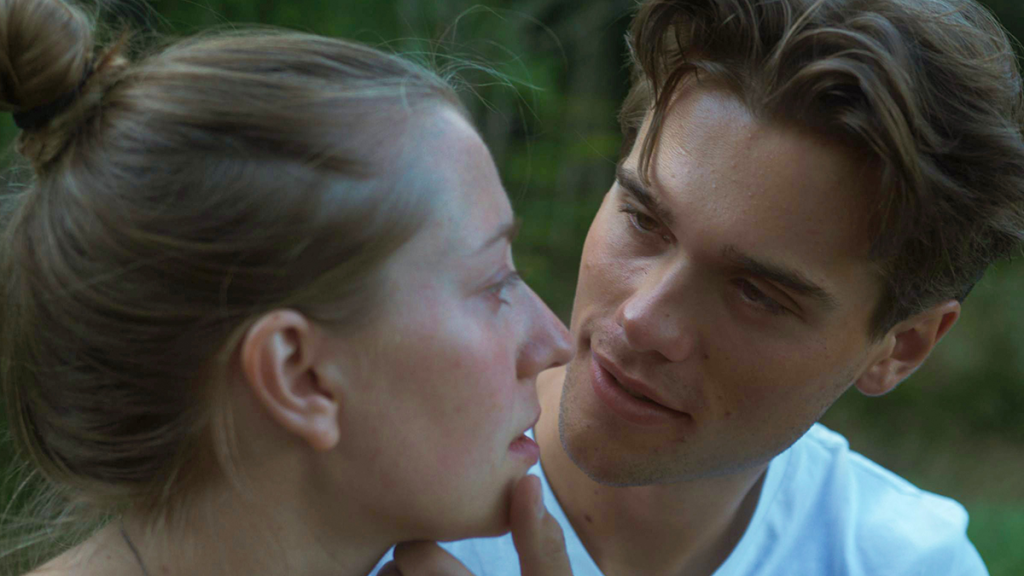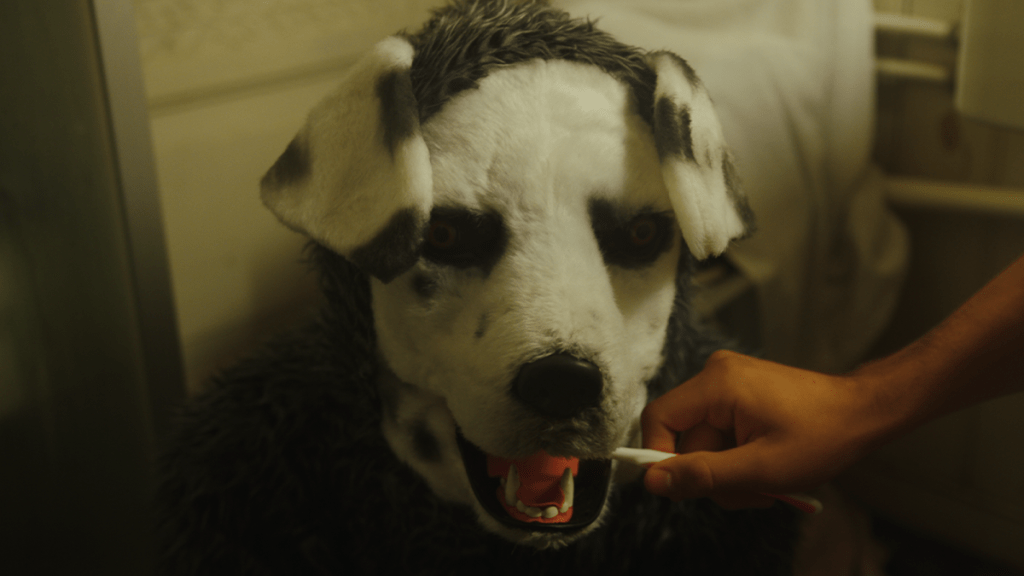ComingSoon Editor-in-Chief Tyler Treese spoke with Good Boy writer and director Viljar Bøe about making an unforgettable thriller. Bøe discussed how limitations help creativity and the relationship between dogs and people. The film is now available in theaters, digitally, and through video-on-demand platforms.
“Sigrid thinks she’s met her perfect match with the charming and handsome Christian, but there is one catch — he lives with a man who acts like his pet dog,” reads the film‘s synopsis. “Trying to be open-minded, Sigrid continues the relationship but soon notices an insidious under-tone to Christian. Maybe ‘puppy play’ isn’t as innocent as it seems.”
Tyler Treese: The visual of Frank in the dog suit is immediately attention-grabbing. With there being so many movies released every single week now, how important was it to have like an immediately interesting visual element that draws eyeballs?
Viljar Bøe: It was very important. That was actually one of the main draws for me. Also, one of the main reasons why I wanted to make this film was the image of a person in a dog costume. I thought that would, as you say, draw people in and get the reaction out of people.
I think one of the biggest challenges in the movie on your part was showing why Sigrid would return to Christian after seeing this man dressed up in a dog suit. Obviously, it’s a movie and characters are going to ignore some red flags, but I liked how it was handled in the movie. Can you speak to that challenge of making her motivations believable enough to where she would go on a second date with this guy?
Yeah, of course. I think one of the main clues was perhaps the casting of Christian. I think it was important that we had a naturally charming and handsome person to play the role of Christian. So that was one of the choices made to make sure that she came back and also find a way to present the dog as not too much of a creepy thing, especially at first. I wanted the audience, with Sigrid, to accept this concept of a person in a dog costume. When I first started the script, I didn’t know about “puppy play,” but when I found out that was like a real thing, that also helped give a reason for why she would come back. If it’s already a thing, then it’s not that much of an issue.
As you mentioned, the audience almost accepts and gets used to Frank, the Dog after a while, and it’s a bit of a slow burn. Things aren’t too creepy, then things get really intense in the back half. How was it, determining the pacing and structure of Good Boy?
It was supposed to make people feel like it was actually going to turn out to be … of course it is marketed as a thriller — which it is — but I wanted people to, when you’re watching the film, maybe forget a little bit that it was a thriller, especially in the first half, and maybe accept it as more of a romantic comedy sort of thing. So that was deliberate, to have a normal film or less of a thriller pace, especially at the first half. Then, hopefully ramp it up in the second half. So yeah, it was definitely deliberate.
You spoke about not knowing about the puppy play fetish beforehand. So what did inspire you to write this movie? What was the launching off point for this idea of a human in this dog suit?
I didn’t know about puppy play, but things like furries, of course, are a big inspiration. I always thought the way we treat real dogs is kind of interesting. We call them man’s best friend, but they don’t really have a choice in it. If they act up or act in a bad way, they’ll get disciplined or even worse, you know? So I’m sure most dogs love their owners, but how do you really know? They don’t really have any choice. They don’t really have that same way as humans to communicate if they’re getting treated badly and stuff like that.
So that was what happens if you put a human in that situation where they seem okay with the situation, but they don’t really have like a way to communicate. That was the important thing with the mask too, is that myself and the producers did talk about if we were going to have it so you could see the face with the costume or if we should have a mask. For me, it was important to have a mask, because then you’d forget that it was a human, hopefully. Then you didn’t really know what Frank was thinking, because it was just a mask. He can’t really express himself as a normal human.

I really enjoyed the ending of Good Boy. It left me with a real pit in my stomach. Without getting into spoilers, how was coming up with a visual that will leave an impact on the viewers as a little twist ending?
Yeah, so for me, of course you want to have a definitive ending, but you also — not a hinting to a sequel or anything — want the story to continue in people’s heads. So you want to put ideas in peoples head. Most people have pretty great imagination. So if you just give people a little bit information, like a jumping point. Then they ask, “What’s happens now? What will it look like the next 10 years or 20 years in this situation, if it just keeps going?” So I think that was the important part. It’s something for people to discuss, because you don’t get all of the information. It seems to be quite — at least for some people — a controversial ending. Some people seem to not like it, and some people seem to really like it. I think that’s purposeful, to make it a little bit enigmatic, I guess you could say.
You’ve done a great job of doing these thrillers that don’t have super high budgets. How challenging is it to craft these stories that work around the limitations? Do you see limitations as an aid to the creative function rather than a negative?
Yeah. it’s a paradox in a way, because in bigger budget movies, you obviously have more resources to do whatever you want. But then you might have people like producers and stuff that could be holding you back — giving you restrictions on what you can and can’t do, because there’s real money on the line. But a movie like this, where you have less resources, but then you have also less people giving you notes or saying what you can and can’t do … you get some restrictions, obviously, with the lack of resources, but that also gives you the freedom to go places where studio films might not dare to go because they’re scared to scare away the audiences.
So with locations and stuff like that, we were mindful when writing the script about the amount of locations and the type of locations and the amount of actors. But I didn’t feel like this is the movie that I would want to make no matter what the budget. There’s some limitations, but we try to ignore it as much as possible and make the best of it.










